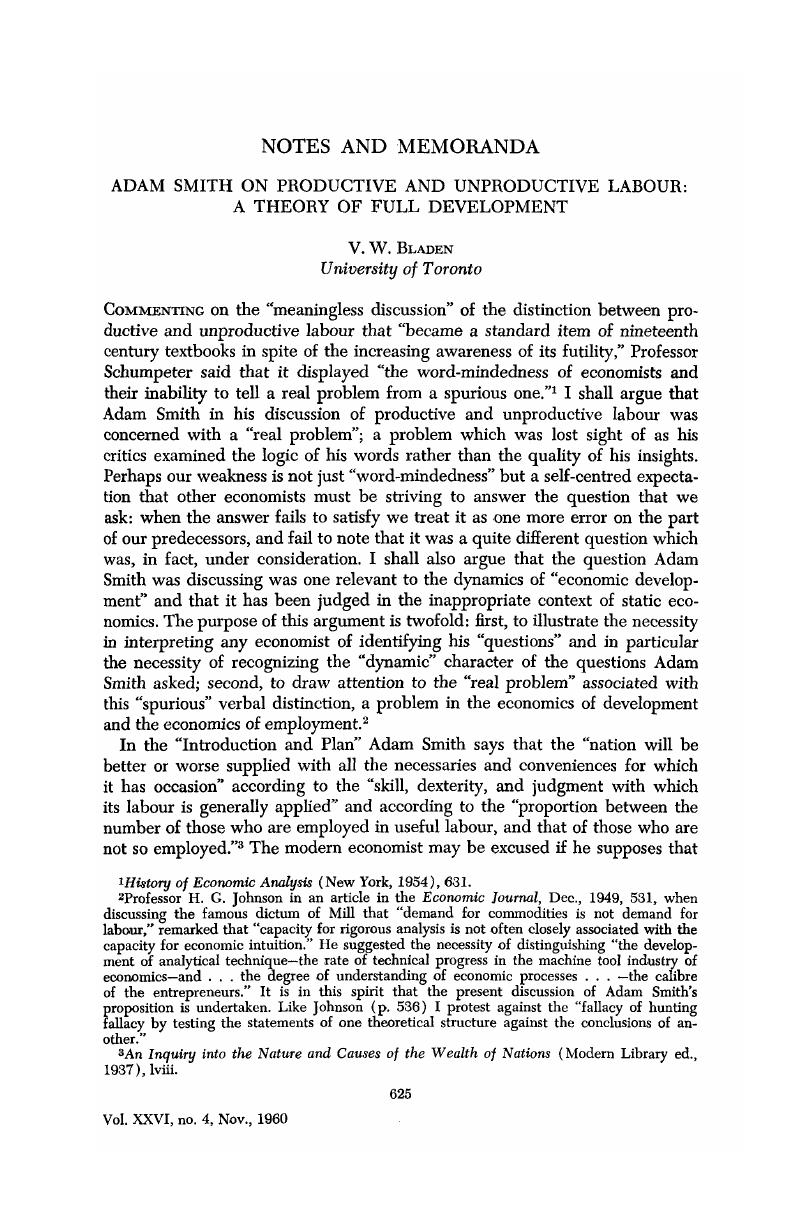Published online by Cambridge University Press: 07 November 2014

1 History of Economic Analysis (New York, 1954), 631.Google Scholar
2 Professor H. G. Johnson in an article in the Economic Journal, 12., 1949, 531 Google Scholar, when discussing the famous dictum of Mill that “demand for commodities is not demand for labour,” remarked that “capacity for rigorous analysis is not often closely associated with the capacity for economic intuition.” He suggested the necessity of distinguishing “the development of analytical technique—the rate of technical progress in the machine tool industry of economics—and … the degree of understanding of economic processes … —the calibre of the entrepreneurs.” It is in this spirit that the present discussion of Adam Smith's proposition is undertaken. Like Johnson (p. 536) I protest against the “fallacy of hunting fallacy by testing the statements of one theoretical structure against the conclusions of another.”
3 An Inquiry into the Nature and Causes of the Wealth of Nations (Modern Library ed., 1937), lviii.Google Scholar
4 Ibid., 314–15.
5 Ibid., 329–31.
6 Ibid., 331–2.
7 Ibid., 319–20.
8 Ibid., 326.
9 I am encouraged to find that Professor Arthur Lewis interprets Adam Smith as I do. In his excellent article, “Economic Development with Unlimited Supplies of Labour,” Manchester School, 05, 1954, he says (pp. 146–7)Google Scholar: “The capitalist sector is that part of the economy which uses reproducible capital and pays capitalists for the use thereof. (This coincides with Smith's definition of productive workers. …) … The distinction between productive and unproductive workers had nothing to do with whether the work yielded utility, as some neoclassicists have scornfully but erroneously asserted.” Professor Lewis also notes (p. 142) that “the line between employees and dependents is very thinly drawn.” This T. R. Malthus clearly had in mind when he said: “Three or four hundred years ago, there was undoubtedly much less labour in England, in proportion to the population, than at present; but there was much more dependence: and we probably should not now enjoy our present degree of civil liberty, if the poor, by the introduction of manufactures, had not been enabled to give something in exchange for the provisions of the Great Lords, instead of being dependent upon their bounty” ( Essay on the Principle of Population, 1798, p. 293 Google Scholar). See also the brilliant article by Myint, H. on “The ‘Classical Theory’ of International Trade and the Underdeveloped Countries,” Economic Journal, 06, 1958 CrossRefGoogle Scholar; also chap. v in his Theories of Welfare Economics (London, 1948).Google Scholar